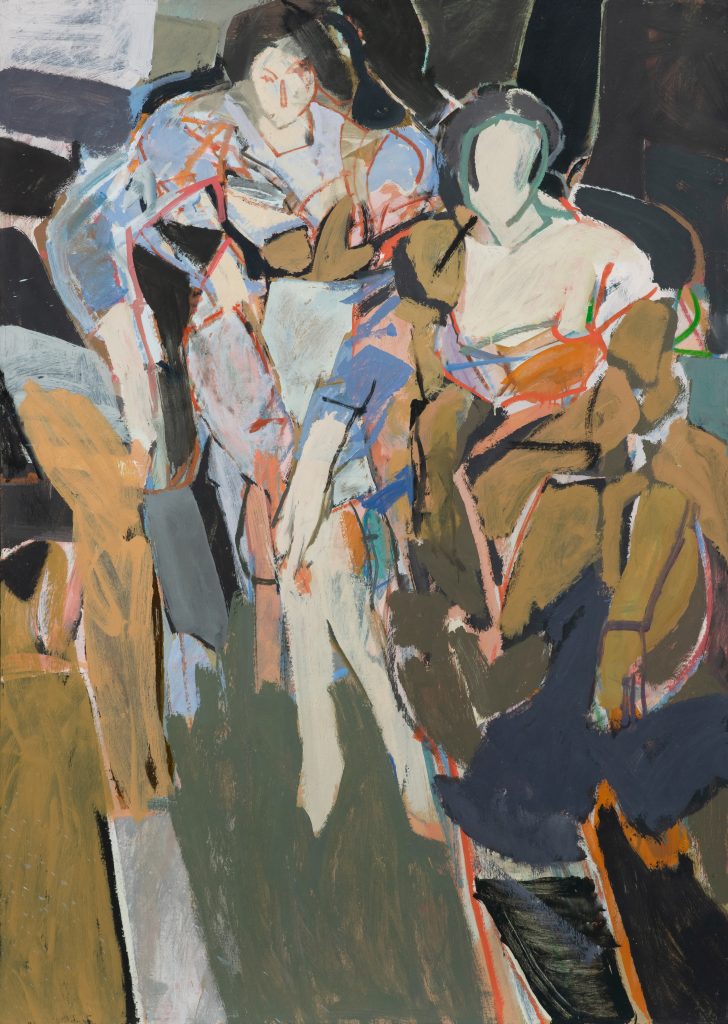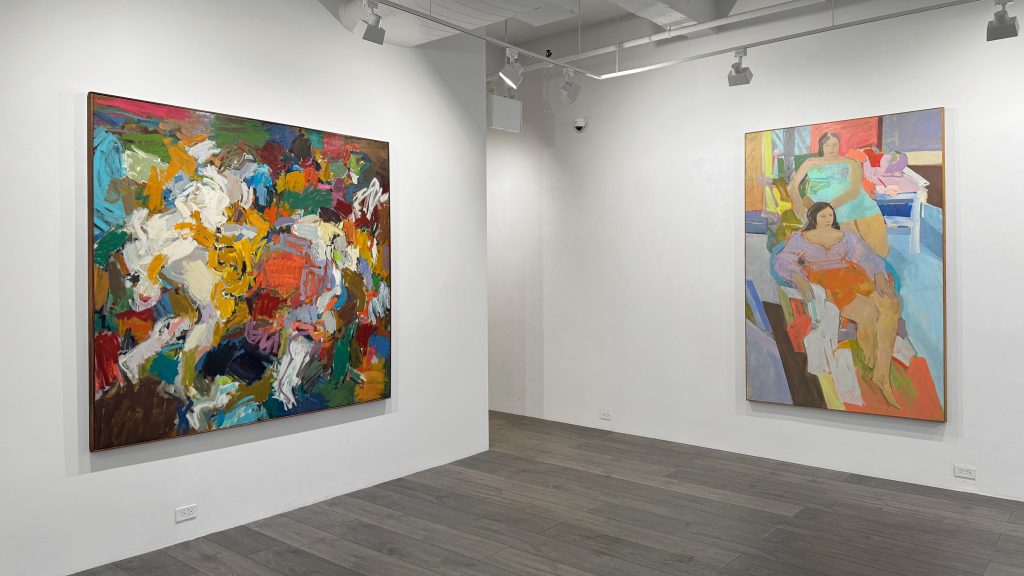The works by the late artist Charles Cajori included in the exhibition “Turbulent Space, Shifting Colors,” which just recently closed at the gallery Hollis Taggart in New York City, are entrancing.
They inject everyday life, including both what’s directly, sensorially experienced and the realm of emotion, with alluring whimsy.
Though the specifics are different, I’m reminded of artist Florine Stettheimer, whose works — figurative but oriented more towards storytelling than direct representation — happened to be a particularly illuminating stop on my own journey with art. Stettheimer died in the 1940s, and her artworks that I’ve seen tend to present perfectly comprehensible scenes as places drenched in both the physical and emotional experience of lightness, with the paintings’ contents — generally less detailed than our physical reality would be — floating across their surfaces.
“Charles Cajori: Turbulent Space, Shifting Colors”
Cajori’s surfaces in Hollis Taggart’s exhibition showcased both abstraction and references more parallel to our tangible world, though his figures and scenes aren’t hyper-realistic either. And whether imprecise forms or artfully flowing figures, I was struck by something very specific in Cajori’s artworks: the layering. He freely layered color, letting areas of it merge into each other and on top of themselves, capturing a churning movement that feels inherent to realistic perception but isn’t always appreciated in its full formation.
Nothing is still or staid. When figures were present at all, Cajori layered the color up to the level they occupied and then orchestrated those figural forms to themselves seem to drift into both each other and the background. A press release from the gallery says Cajori talked about artistically encapsulating the “swift continuum of space,” and that description is borne out to an enrapturing extent in the actual artworks. Cajori outlined something we experience but don’t often see, unfurling a natural intermingling of living forms that move through the spaces of our world with those background spaces.
Cajori’s living figures and their inhabited environments inform each other in a continuous loop, with a key feature that continual reinvention — an indefinite, eternal push that dissolves precision but offers a new kind of enveloping, emotional clarity.
And the transitions between form and form — and figure and background — are smooth, allowing perhaps surprisingly clean through lines to break through, often expressed in Cajori’s art via color. Throughout, shades of bewitching, blissful gold appear, joined by light, airy pink and the closely related salmon (in the color sense). The result is tension subsumed by the weight of something welcome: a simmering, background heat that is moderated and mediated by freely associating and developing forms, figures, and spaces.

Art of Enrapturing Force
Cajori’s magisterial combinations of color and form fill their spaces and burst forth: an easygoing but commanding environment of encircling growth.
As laid out in this gallery’s exhibition, Cajori packed his art’s surfaces, crowding them with that whimsy as each form intertwines with the next, shifting in place, against its neighbors, and in unison, somehow concurrently. In Cajori’s artwork, perception stays tied to its source — that of one, individual person’s senses — but is a full, grand thing, laying like regal drapery across the environment surrounding you.
Cajori’s more abstract artworks in this exhibition were as expressive as those containing figures, with that same relational journey for each individual piece’s forms and colors left front and center. An untitled, abstract work from 1960 merges a searing gold with grays and whites that remind me not of the physical texture of concrete but its experiential impact in an environment, ferrying that heat into touch. The accompanying colors also suggest, perhaps, a snowstorm: another real-world example of something richly, forcefully enveloping.
Because as smoothly as Cajori’s forms and colors build into their individually majestic manifestations, that’s something else that’s key. His work is all lively, moving purposefully and persistently. His scenes, as captured, are themselves the ones richly filling up their environs, though you obviously know as the viewer that it’s all the work of an artist and we’re on the outside, looking in. But it all expands, grows, and billows, sweeping up its surroundings. His figures’ backgrounds are sometimes entirely abstract, disconnected from any real-world precision — but you still get the sense they’re emotionally buoying snapshots of shimmering experience.
Cajori’s art was a dance, looking at the established scenery, the inherent potential — made tangible, and the formal relationships that add the spark of life to all of this, both inside and outside the art.
I’ve noticed I tend to see this next part in a lot of art that I really latch onto, but Cajori’s works also felt emotionally realistic, or at least pleasantly aspirational. The everyday — the trudging back-and-forth between each imprecise, blocky form and the next — gets infused with wonder here. It’s living, moving, and persistent. Cajori’s art sets the sometimes hulking forms that continually surround us into whirls of motion.
This exhibition is, as I mentioned, already closed, but I am looking forward to the next couple of exhibitions from Hollis Taggart in New York City closing out the year. There will probably be reviews!



Featured Image: “Charles Cajori: Turbulent Space, Shifting Colors” (installation view), Hollis Taggart, New York, October 17 – November 16, 2024. Image courtesy of Hollis Taggart.
You may also like
-
Diana Kurz at Lincoln Glenn in New York: A Review of a Shining Art Exhibition
-
Dustin Hodges at 15 Orient in New York City: An Ensnaring Exhibition at an Exciting Gallery
-
Maren Hassinger at Susan Inglett Gallery in New York: Reviewing an Uplifting Art Exhibition
-
Enzo Shalom at Bortolami in New York City: Reviewing an Entrancing Exhibition of Paintings
-
“Ben Werther: Townworld” at Amanita in New York City: Reviewing a Richly Memorable Art Exhibition
